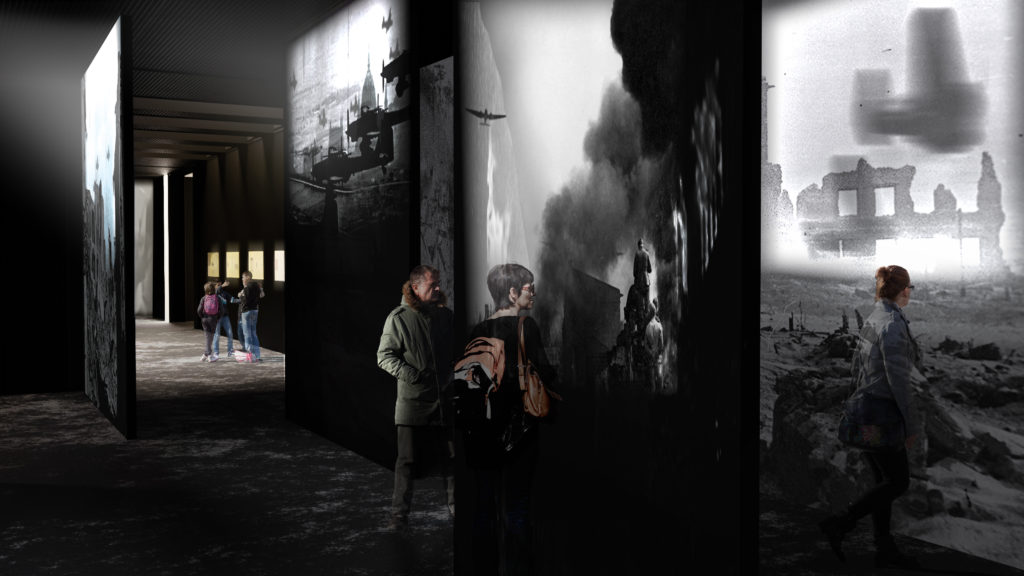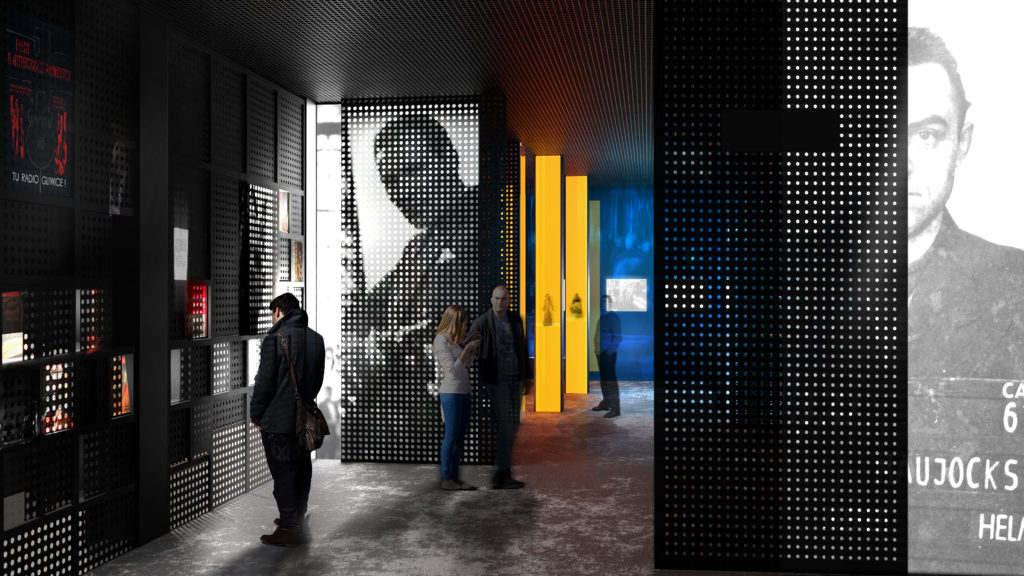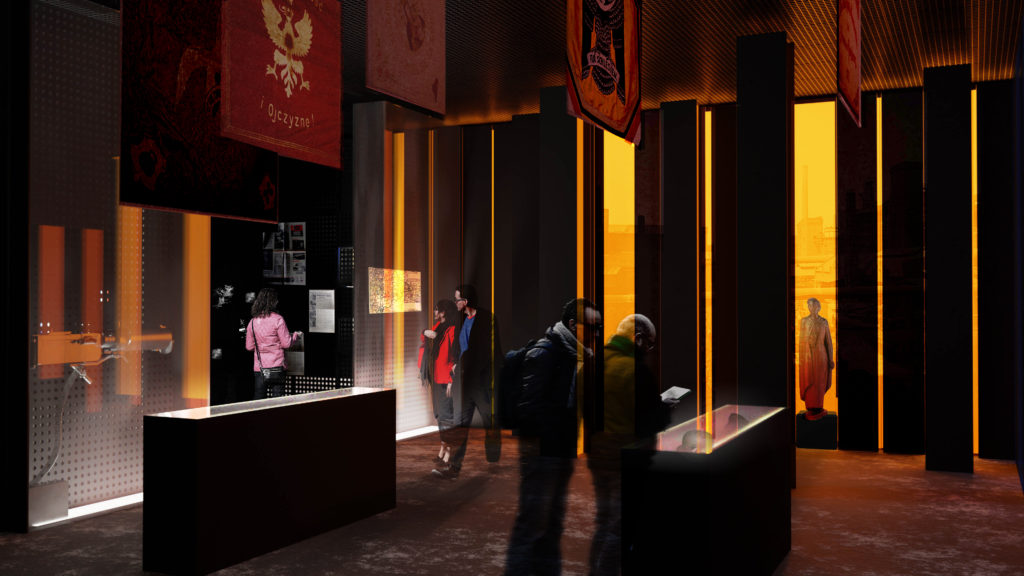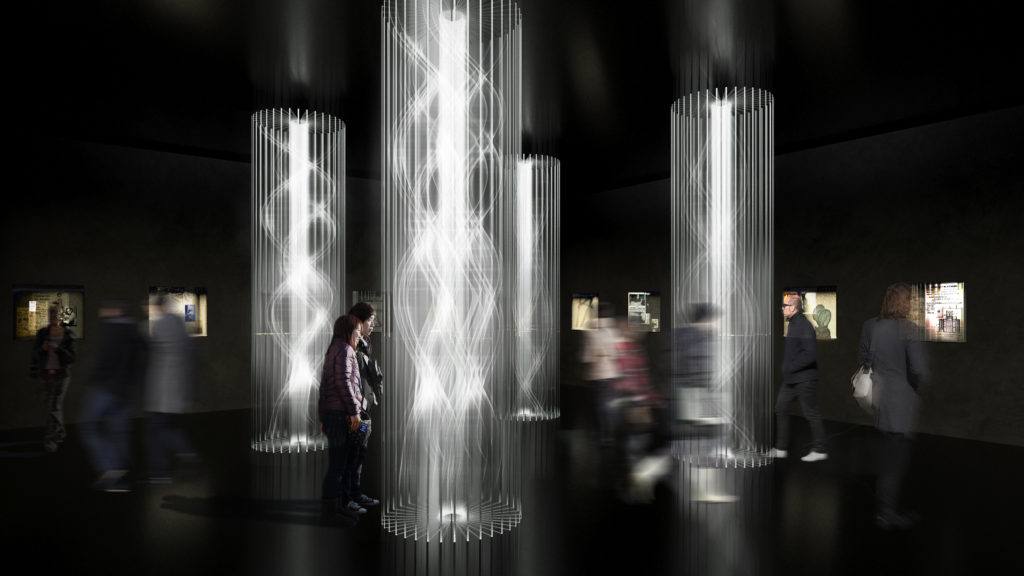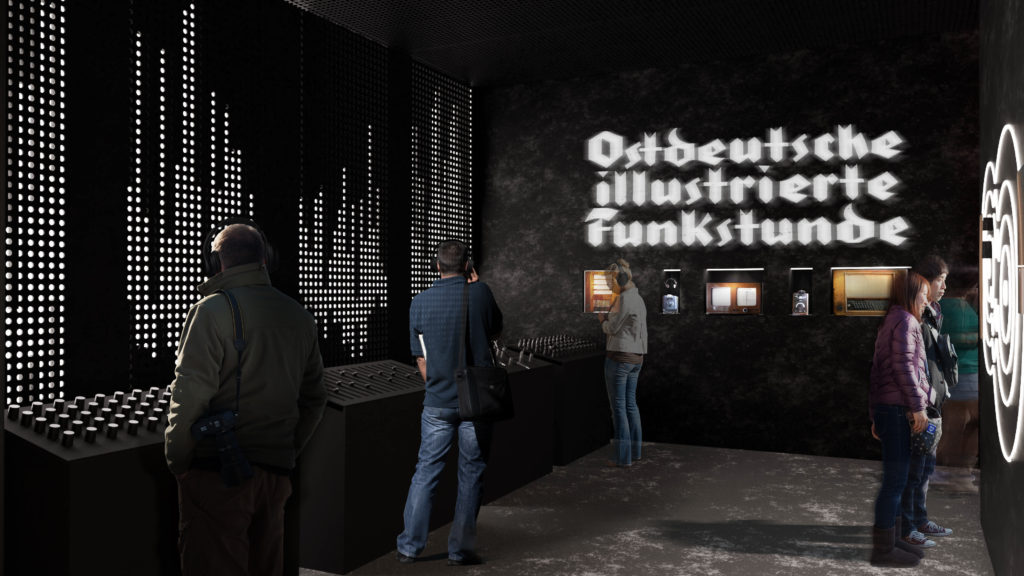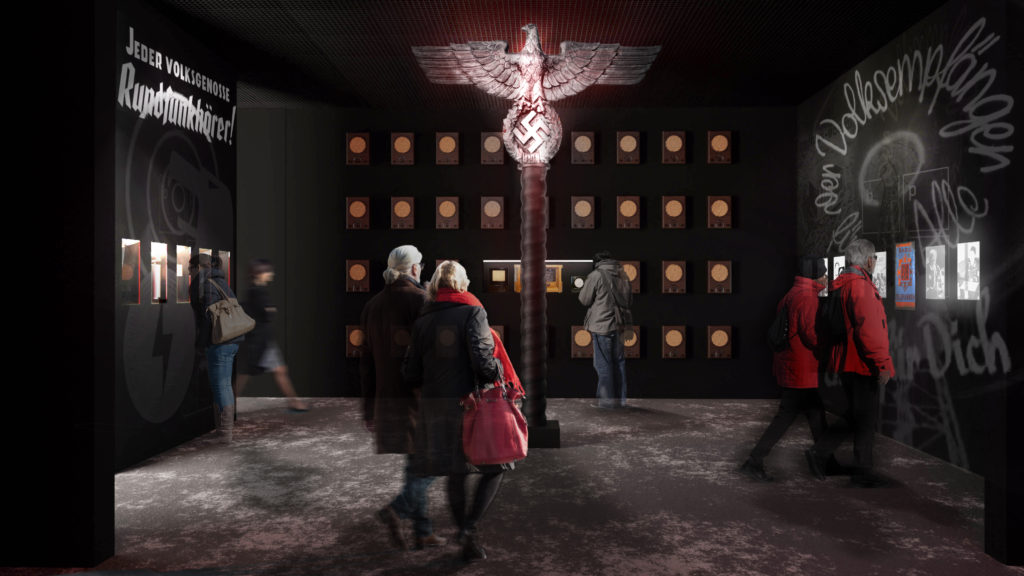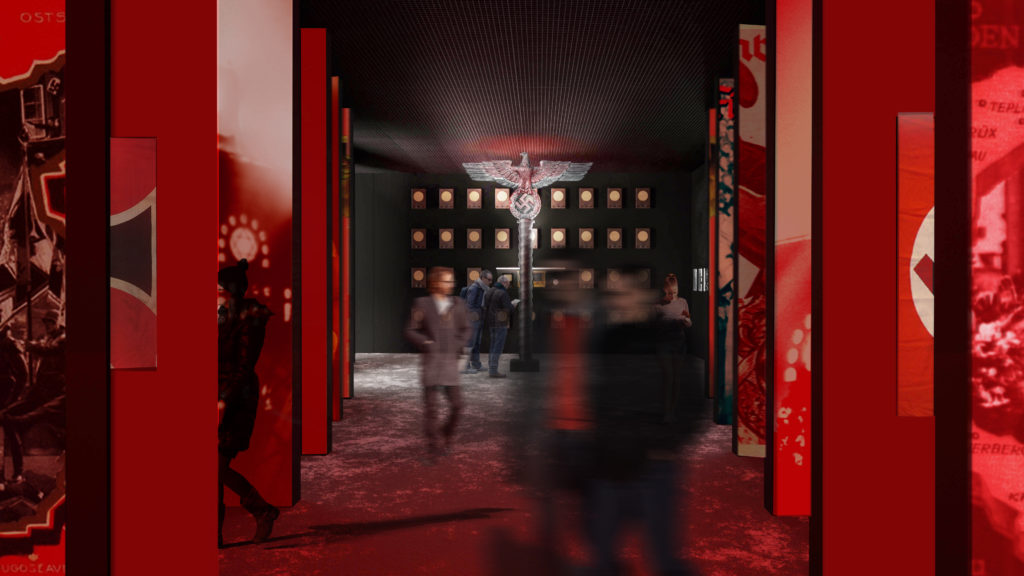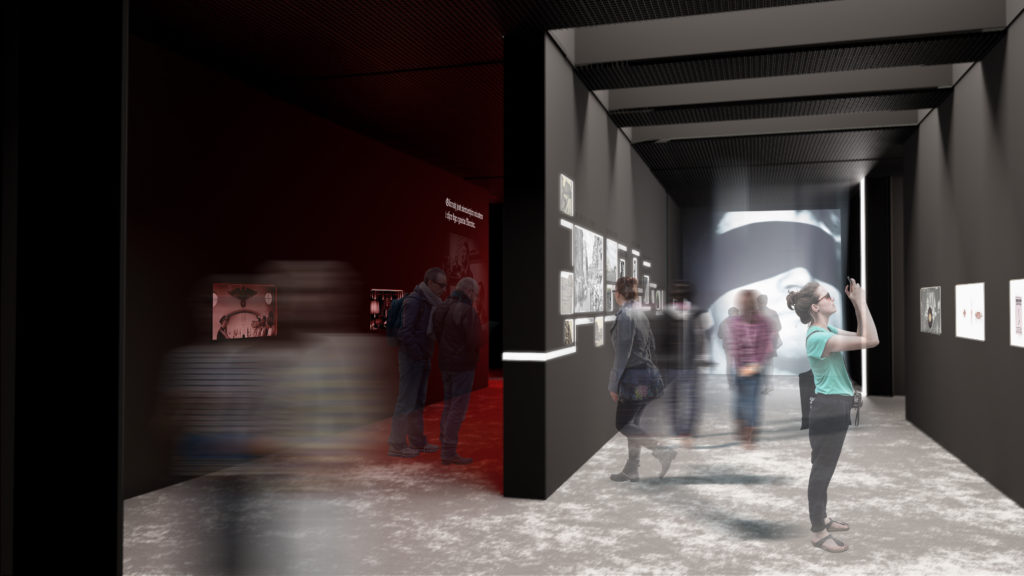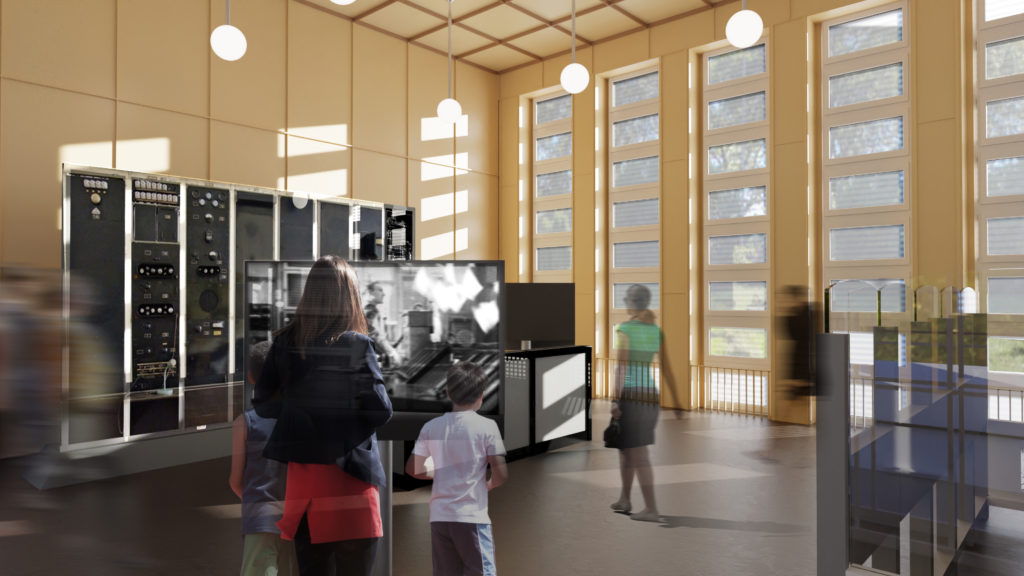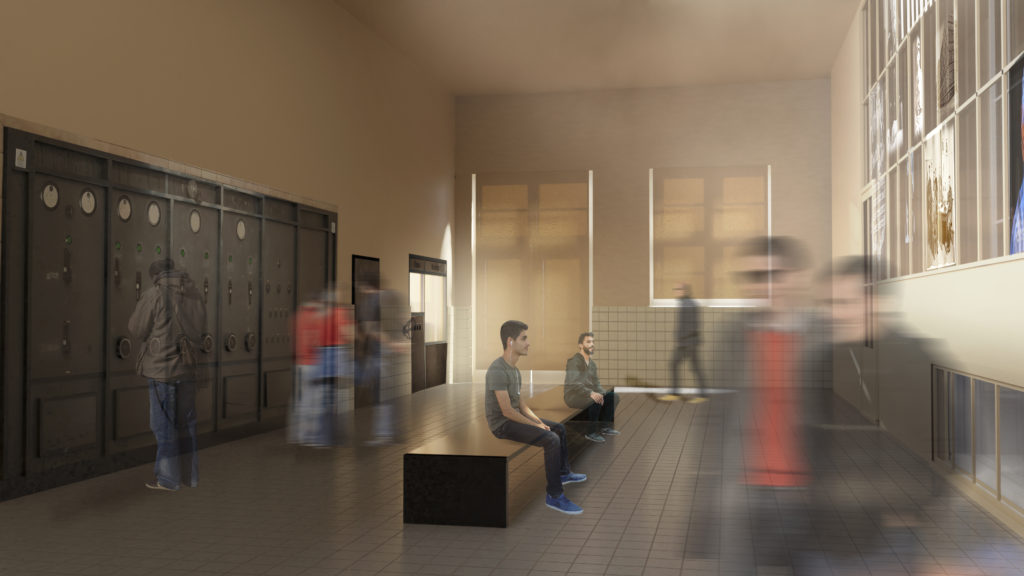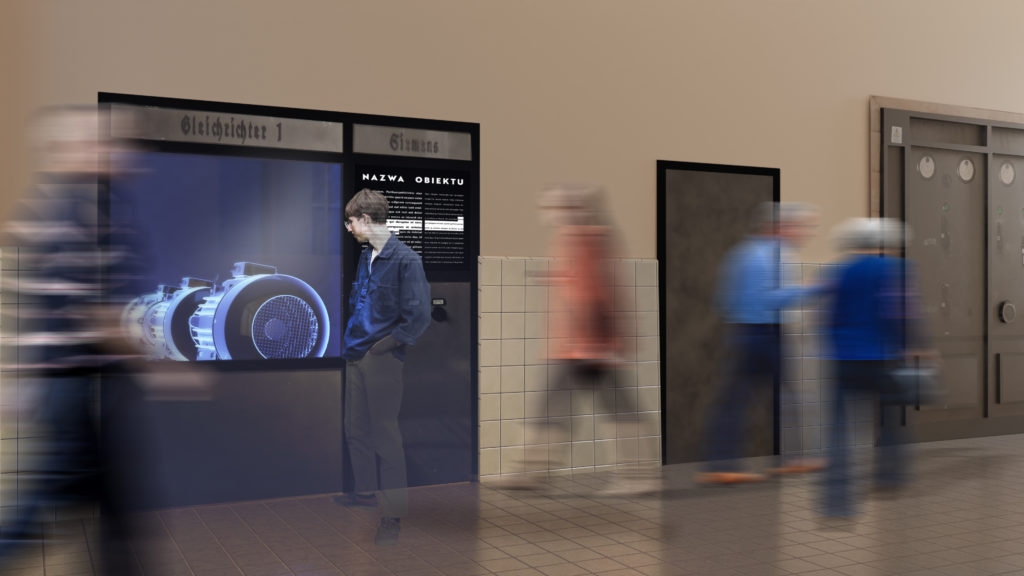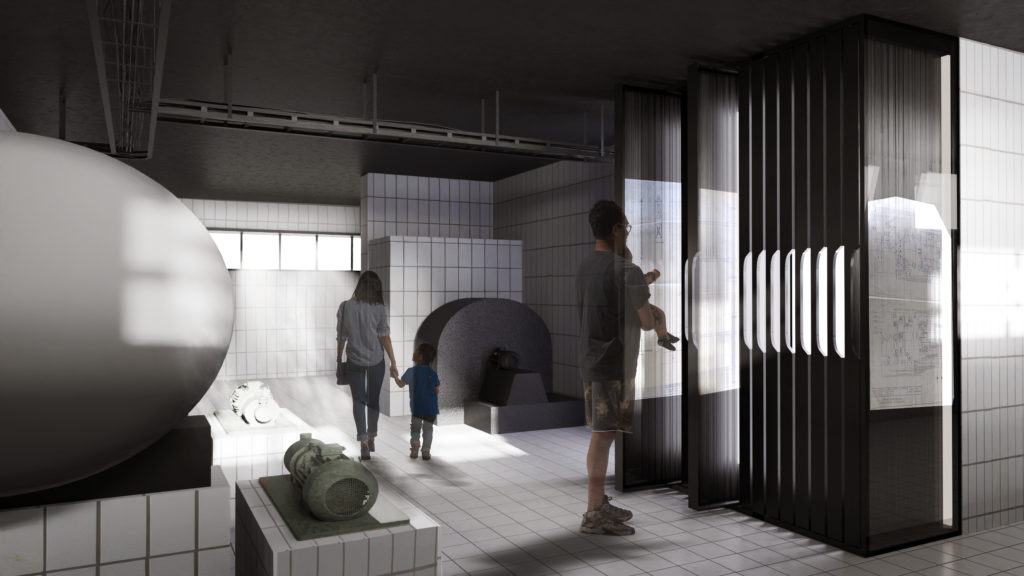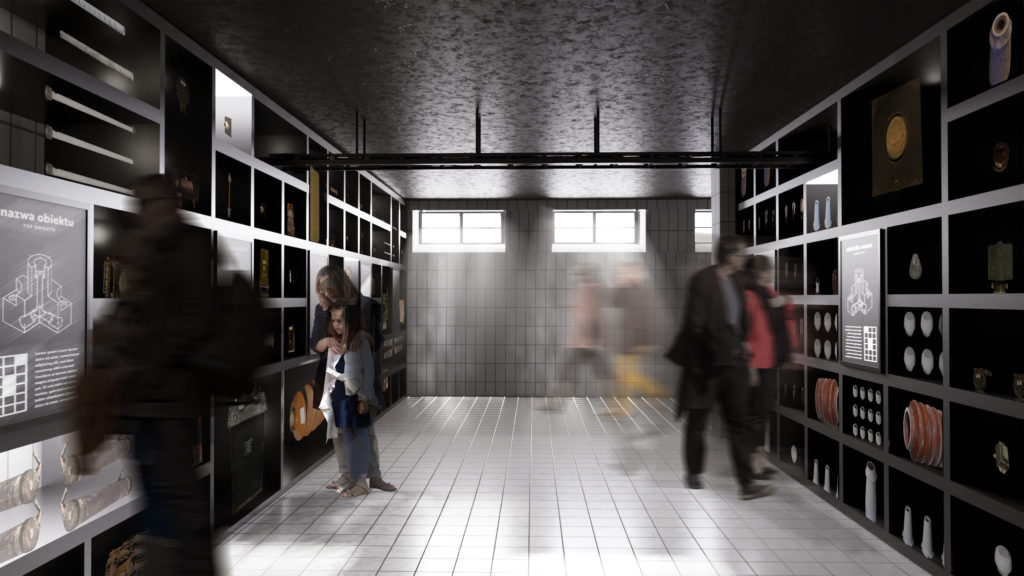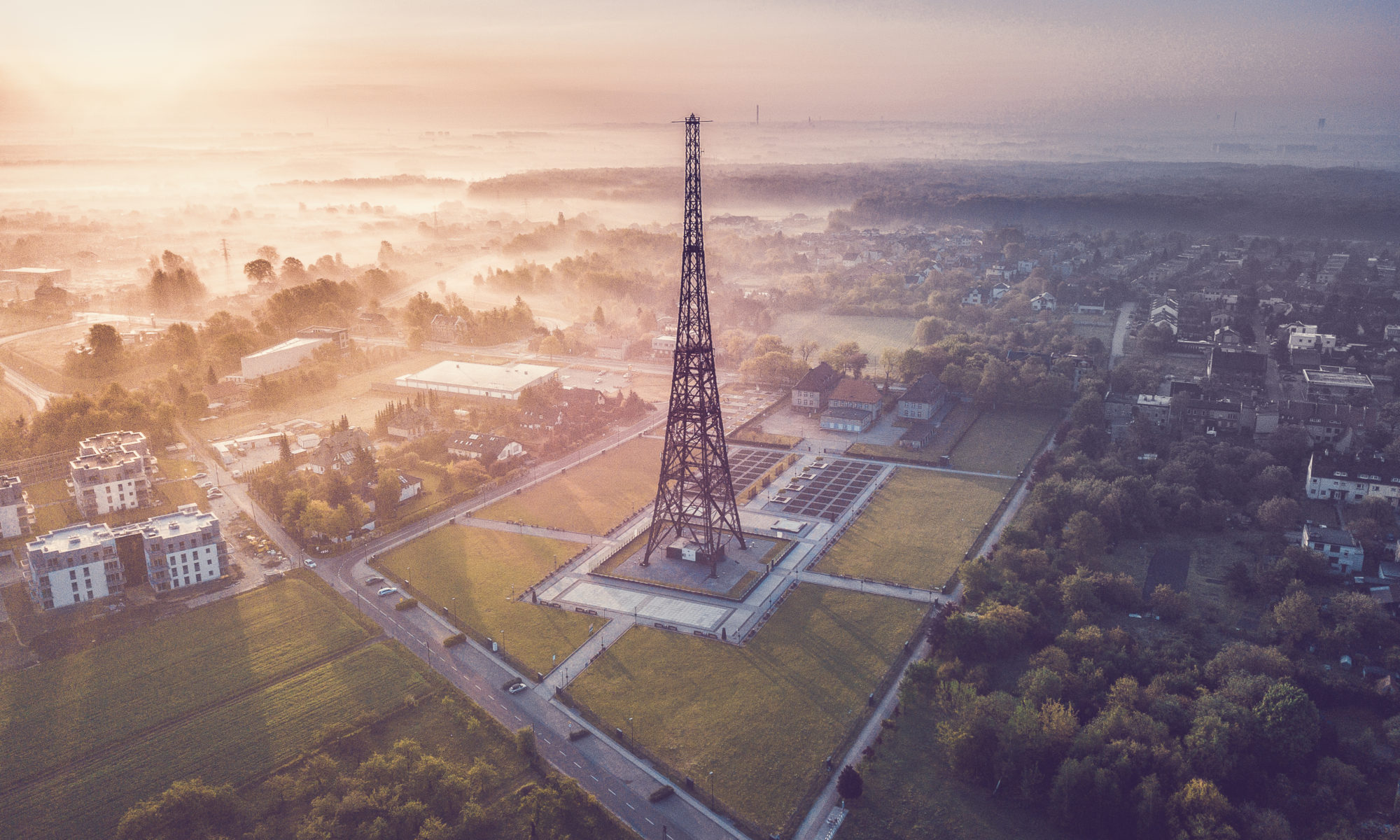
Gliwice Radio Tower
In February 2022, Mirosław Nizio, owner of the Nizio Design International studio, and Grzegorz Krawczyk, director of the Museum in Gliwice, signed a contract to develop a design for the Gliwice Radio Tower. Thus, after more than a dozen years, the team of the Warsaw studio returned to cooperation with the Museum, which was initiated by the design of the exhibition ‘Słusznie słyną dziś Gliwice…’ [Gliwice is Justly Famous], opened in the Artistic Casting Department in October 2010.
The Nizio Design International design involves the revitalization of a complex consisting of three buildings supplemented by a newly designed underground section. Changes to the historic Radio Tower complex are kept to a minimum. The centrally located facility, i.e. the former transmitter building, will be supplemented with an observation deck and newly created underground spaces that will house the main part of a specially designed permanent exhibition. The other two facilities, previously residential buildings, will undergo redevelopment and revitalization. One of them will serve as a hotel, while the other will house i.a. the main entrance hall, educational and storage spaces, a cafeteria and a recording studio.
In arranging the exhibition space, the designers carefully looked at the existing architecture of the historic buildings of the Radio Tower and its surviving equipment. They were also inspired by the industrial landscape of Upper Silesia of the first half of the 20th century, captured in photographs or films. The materials used in the project, including dark steel structure and displays made of perforated sheet metal, are not only the building components of the scenery, but also the carriers of content that engage the senses of the viewer. The dramaturgy of the exhibition resembles the scenario of a noir fiction, a detective story.
The script of the new museum exhibition includes historical, technical and fictional layers. The technical layer will be related to the original function and principles of operation of the Gliwice Radio Station, it will expose the specifics of the unique monument of radio technology, the circumstances of its creation and the principles of its operation. The historical section provides the context, background and key political issues relating to the site and the events that led to the Gleiwitz incident and the outbreak of war. It will be formed by thematic blocks: the Polish-German conflict over Upper Silesia after the First World War and the division of the region, radio broadcasting in Polish and German Upper Silesia, Germany and German Upper Silesia during the Nazi era, the Gleiwitz incident and the memory of it. The fiction layer will bring closer the dramatic course of the diversionary action organised by the German Third Reich’s special services called the ‘Gleiwitz incident’ which led to the death of Franciszek Honiok, an innocent victim of a political murder.
Central to the investment is the preservation of the character of the site and its urban layout. The architects’ unique approach to the project is dictated by the fact that they are working with a unique in the world and the most recognizable monument of Gliwice, listed as a Monument of History and part of the European Route of Industrial Heritage.
